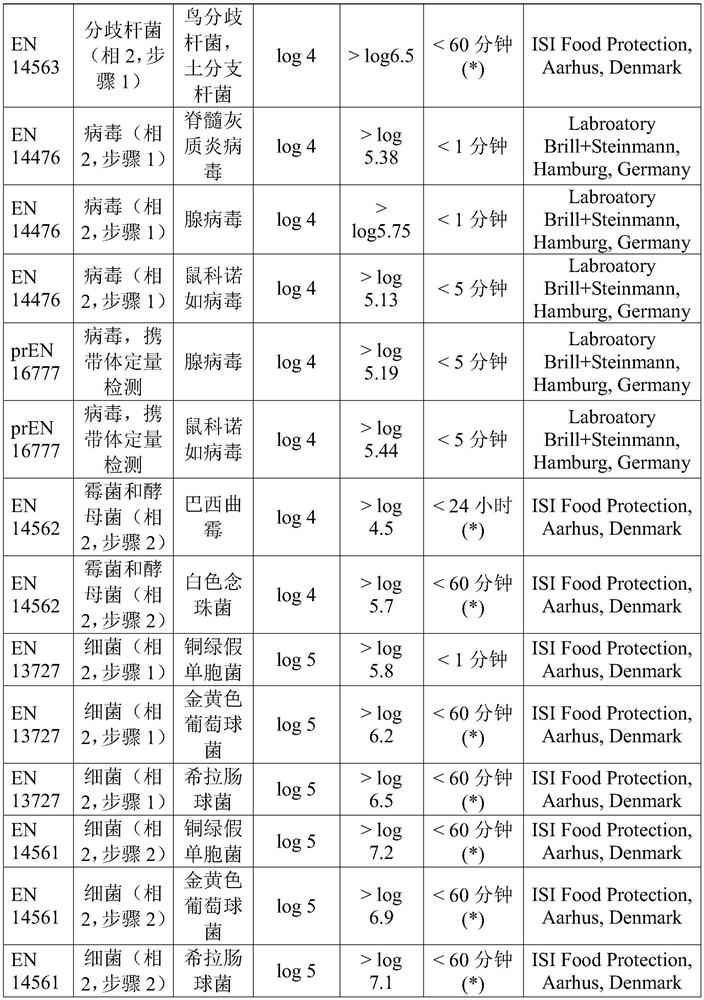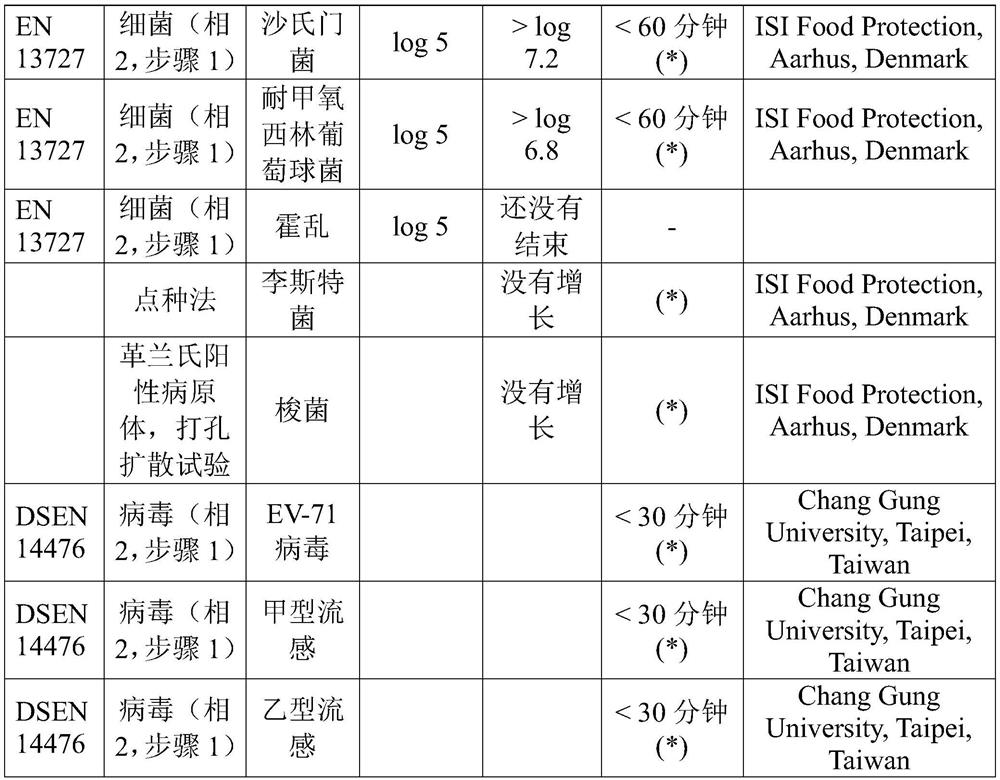Transparent photocatalytic coating for generating free radicals in situ under visible light to resist microorganisms, odors and organic compounds
A free radical and microbial technology, applied in metal/metal oxide/metal hydroxide catalysts, physical/chemical process catalysts, catalyst activation/preparation, etc., can solve short-term effective problems
- Summary
- Abstract
- Description
- Claims
- Application Information
AI Technical Summary
Problems solved by technology
Method used
Image
Examples
Embodiment 1
[0070] A liquid composition comprising a) 0.01-3wt.% TiO 2 Nanoparticles, anatase type, average primary size 5-10 nm; b) 0.1–1 wt.% nitric acid; c) 0.00001–0.0025 wt.% AgCl; d) 0-0.1 wt.% isopropanol; e) 95.8975–99.88999 wt.% pure water.
[0071] TiO 2 The average particle size (5-10nm) is just equal to or higher than the Bohr radius. This allows TiO 2 Maximization of coating surface area without losing significant absorption of visible light due to exciton quantum confinement.
[0072] Nitric acid was used as a stabilizer to prevent nanoparticle aggregation. Acids work by protonating the surface of the particles and thus giving them a positive surface charge. Charged particles repel each other and do not clump together. Other acids such as hydrochloric or sulfuric acid may be used. Alkalis can also be used, which create a negative surface charge.
[0073] AgCl was used as a source of silver ions. Silver ions act as dopants, replacing TiO 2 The titanium atoms in the ...
Embodiment 2
[0078] A method for providing on-site a liquid composition against dirt, microbes and odours, comprising a) diluting the liquid composition 1-fold (undiluted) to 10-fold (1 part composition to 10 parts purified water) if desired ); b) applying the composition to the surface, for example, by spraying the composition with an electrostatic spray gun at a specified distance from the target surface to be coated, such that the visible spray plume ends at 10-20 cm from the target surface; c) allowing The deposited particles were completely dried, which took about 2 hours.
Embodiment 3
[0080] A method of producing a liquid composition comprising the steps of a) rapidly mixing 0.1-10 wt.% titanium isopropoxide with the following solutions under high agitation: 88.988-99.88999 wt.% pure water, 0.01-1 wt.% nitric acid and 0.0001 - 0.002 wt.% AgCl; b) evaporation of excess isopropanol formed during the reaction at a vacuum pressure of 1 - 999 mbar and c) peptization at a temperature of 30 - 99°C. These last two steps can be performed simultaneously for a period of time that will depend on the initial reagent volume. Steps b) and c) can advantageously be carried out in one and the same step, e.g. removing excess alcohol by vacuum evaporation using a temperature between room temperature and 100° C. and an absolute pressure between 0.1 mbar and ambient pressure, the treatment time depending on volume.
PUM
| Property | Measurement | Unit |
|---|---|---|
| Conductivity | aaaaa | aaaaa |
Abstract
Description
Claims
Application Information
 Login to View More
Login to View More - R&D
- Intellectual Property
- Life Sciences
- Materials
- Tech Scout
- Unparalleled Data Quality
- Higher Quality Content
- 60% Fewer Hallucinations
Browse by: Latest US Patents, China's latest patents, Technical Efficacy Thesaurus, Application Domain, Technology Topic, Popular Technical Reports.
© 2025 PatSnap. All rights reserved.Legal|Privacy policy|Modern Slavery Act Transparency Statement|Sitemap|About US| Contact US: help@patsnap.com



